Late 2014 conference
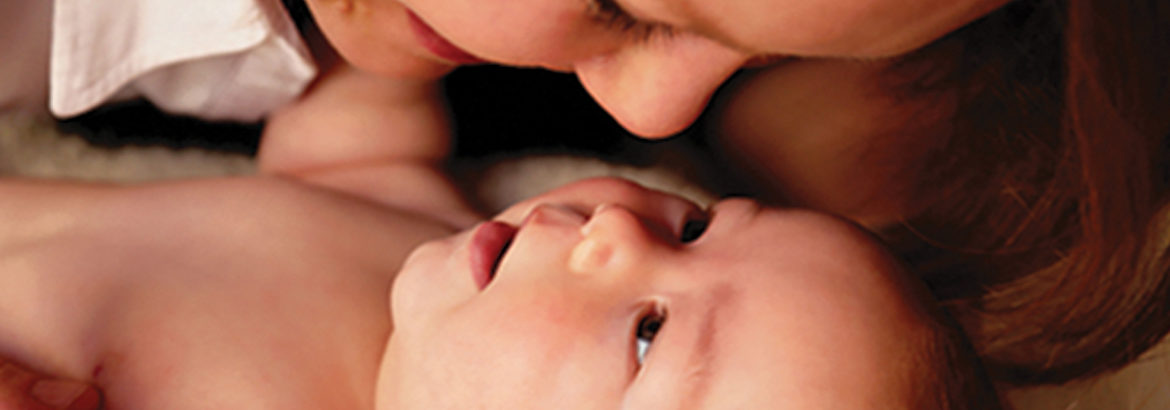
Let’s talk breastfeeding & human milk
September - November, 2014
Our 5th online breastfeeding conference
More Rock Stars of Lactation™ presented at our fifth conference, Let’s talk breastfeeding & human milk. This was held online during September- November 2014 and had participants from 55 countries. The conference is now closed and the presentations are no longer available. You can still read the topic introductions and more background about the speakers. Thank you for your interest!

Are we feeding babies or bacteria?
Kathy Abbott, IBCLC - Read moreAre we feeding babies or bacteria?
Kathy Abbott, IBCLC
It was Einstein who once said, “You don’t really understand something unless you can explain it to your grandmother.” As one of those rare people who actually enjoys speaking in public, Kathy Abbott continually strives to both engage and inspire her audiences. Kathy uses her ability to weave humor and personal stories into her talks to make them more memorable. “It doesn’t matter how smart you are, if you find a presentation boring you’re just not going to remember much about it! Some people are visual learners. You have to give them information in a way that makes it ‘stick’.” Over the years Kathy’s passion for learning has led her to explore breastfeeding on a variety of levels. “Personally I never cared for the hard sciences until I learned how breast milk interacts with a baby’s immune system. It really is fascinating!” Besides her private practice specializing in home visits in Boston Massachusetts, USA, Kathy is an Internationally Board Certified Lactation Consultant and a frequent speaker at conferences and webinars.
Are we feeding babies or bacteria?
Beginning with the very first breath, the fragile newborn’s immature digestive tract (which was germ free while in the womb) becomes the target of an immense battle for real estate as a never ending cascade of live bacteria seek out new territory to conquer. This race for microbial colonization actually began long before the newborn had begun its slippery descent through the birth canal. Beginning in pregnancy, and continuing throughout both birth and breastfeeding, the mother’s body works to prepare her baby for the world of microbes which surrounds her (there’s actually a very good reason why mothers poop during labor!). Despite all our well meaning attempts to provide babies with a germ free start, a variety of factors ranging from hospital policies and c-sections, to the use of antibiotics or infant formula (and even the location of hospital room trash can!) can influence which microbes a newborn will be exposed to first.
Hopefully, the first wave of bacteria that a baby is exposed to will be anaerobic. Harmless, unable to survive for long in the open air, these friendly bacteria will soon settle into place finding their favorite spot along the newborn digestive tract. Together they will begin to form a probiotic colony which will continue to grow and breed until they eventually populate the entire digestive tract as they grow to become over 15 trillion strong! But in order to succeed with their colonization these friendly bacteria must first out-compete any dangerous, disease causing aerobic bacteria lurking in the area. Which group of bacteria will win the right to live and breed in the newborn digestive tract? Finding the best food source (even bacteria have to eat!) will be key their survival. Happily, the oligosaccharides (also known as prebiotics) found in the human breast milk are the preferred sustenance of the more friendly, probiotic, anaerobic bacteria. Through the prebiotics in her milk a mother not only promotes the success of the more friendly anaerobic bacteria, she is also encouraging the colonization of bacteria specific to her individual environment which will differ depending on where she lives, who she lives with, the food she eats, and even the type of soil in her backyard!
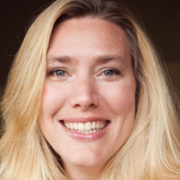
Skin to skin in the first hour after birth: the nine instinctive stages and a methodology for getting started
Kajsa Brimdyr, PhD, CLC - Read moreSkin to skin in the first hour after birth: the nine instinctive stages and a methodology for getting started
Kajsa Brimdyr, PhD, CLC
Dr Kajsa Brimdyr is an experienced ethnographer, researcher and international expert in the implementation of continuous, uninterrupted skin to skin in the first hour after birth. She is the Lead Ethnographic Researcher for Healthy Children Project, a non-profit, NGO agency as well as a Professor in Maternal Child Health at Union Institute and University. She is a published author and the award winning director of The Magical Hour: Holding Your Baby for the First Hour After Birth, produced with Ann-Marie Widström and Kristin Svensson, and together the three also created and produced the groundbreaking DVD Skin to Skin in the First Hour after Birth: Practical Advice for Staff after Vaginal and Cesarean Birth.
Skin to skin in the first hour after birth: the nine instinctive stages and a methodology for getting started
Babies are incredible. Watching them, the nine instinctive stages that they go through during the first hour after birth, has a strong emotional impact on those who are honored to see them. In this talk, Dr Brimdyr introduced participants to the amazing abilities of newborns, and presented the PRECESS methodology, a video ethnography based methodology for sustainable practice change in 5 days.
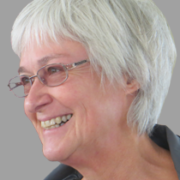
Newborn feeding behaviours and effective latch
Ruth Cantrill, RN, PhD, IBCLC - Read moreNewborn feeding behaviours and effective latch
Ruth Cantrill, RN, PhD, IBCLC
Dr Ruth Cantrill is the author of the Breasts Work information brochure and posters which are distributed by health services across Australia. Dr Cantrill is a Registered Nurse and Midwife with over 30 years clinical experience and International Board Certified Lactation Consultant (IBCLC) qualifications. She currently works for Queensland Health, on the 13HEALTH phone service. Her Masters research in 2002 surveyed Australian midwives’ knowledge of newborn feeding behaviors. In 2007 she completed her PhD at Griffith University. She observed maternal-infant body contact during the first hour of birth in relation to newborn feeding behaviors and effective attachment to the breast. Dr Cantrill’s advocacy for maternal-infant body contact to facilitate newborn feeding ability is portrayed on her Breast Worx website.
Newborn feeding behaviours and effective latch
Maternal-infant body contact immediately after birth is known to contribute to the newborns’ ability to coordinate innate suckling reflexes to breastfeed effectively. My research explored the influence of uninterrupted naked body contact between mothers and their newborn on suckling achievement within the first hour after birth. I observed seventy-eight mother-baby dyads and recorded i) newborn feeding behaviours, ii) the help received by mothers and iii) birthing room practices each minute, for sixty minutes. Help to begin breastfeeding in the birthing room needs to focus attention on newborn feeding behaviours and the readiness of babies to begin suckling. In this presentation I will discuss implications for clinical practice, using case examples from the research study to demonstrate a collective model of practices that influence newborn sucking ability.
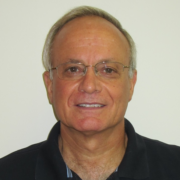
The biomechanics of breastfeeding: how do infants extract milk?
David Elad, DSc - Read moreThe biomechanics of breastfeeding: how do infants extract milk?
David Elad, DSc
Dr David Elad has been a Professor of Biomedical Engineering at Tel Aviv University since 1985. He pioneered computational studies of airflow and transport phenomena in the nasal cavity in the late 80s and bioengineering studies of human reproduction in the early 90s. He developed his expertise in the fields of Respiratory Biomechanics and Reproductive Bioengineering, from complete organs all the way to the cellular level. The respiratory studies included integrative assessment of respiratory muscles, transport phenomena in the human nose, objective noninvasive evaluation of nasal function and mechano-transduction of nasal epithelial cells cultured under air-liquid interface conditions, including effects of air-pollution. The reproductive studies included the role of uterine peristalsis in early human life, pre-implantation embryo transport after IVF, feto-maternal blood circulations in the placenta, transport of nutrition, pharmaceuticals and carcinogenic materials across a tissue engineered placental barrier, mechano-transduction of cultured ovarian cancer cells and biomechanics of infant breastfeeding. He published 120 articles and edited 4 special issues.
Dr Elad has been a visiting scholar at Imperial College London, Massachusetts Institute of Technology, Northwestern University, Nagoya Institute of Technology, Drexel University, Georgia Institute of Technology, University of Toronto, City College New York and Columbia University. He is a member of the World Council for Biomechanics (2002-14) and a fellow of the American Institute for Medical and Biological Engineering (2004), the Biomedical Engineering Society, USA (2005) and the International Academy of Medical and Biological Engineering (2013).
The biomechanics of breastfeeding: how do infants extract milk?
Breastfeeding is a dynamic process, which requires coupling between periodic motions of the infant’s jaws, rhythmic pulsation of the tongue, and the breast milk ejection reflex. The physical mechanisms executed by the infant have been intriguing topics that lead to a century long scientific controversy; whether it is sucking of the milk by sub-atmospheric pressure or mouthing of the nipple/areola to induce a peristaltic-like extraction mechanism. We developed a dynamic analysis of ultrasound video clips acquired during breastfeeding in order to explore the tongue dynamic characteristics. Then, we have developed a new three-dimensional biophysical model of the breast and lactiferous tubes that enabled mimicking the dynamic characteristics of the tongue and nipple observed in ultrasound imaging during breastfeeding, and thereby, exploration of the biomechanical aspects of breastfeeding. We have shown that latch-on to draw the nipple/areola into the infant mouth, as well as milk extraction during breastfeeding, require development of time varying sub-atmospheric pressures within the infant’s oral cavity. The analysis of tongue motility during breastfeeding was compared between healthy infants and tie-tongue cases pre- and post-frenotomy, as well as between breast and bottle feeding.
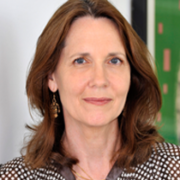
Understanding mastitis: current knowledge and new perspectives
Cathy Fetherston, RN, RM, IBCLC, BAppSc, PostGradDip(Mid), MSc, PhD - Read moreUnderstanding mastitis: current knowledge and new perspectives
Cathy Fetherston, RN, RM, IBCLC, BAppSc, PostGradDip(Mid), MSc, PhD
Associate Professor Cathy Fetherston is Head of Nursing and Associate Dean Learning and Teaching in the School of Health Professions at Murdoch University in Western Australia. Cathy has also been an IBCLC since 1992, and worked in a private community hospital lactation clinic until 2010. She still provides continuing breastfeeding education to midwives, lactation consultants and child health nurses and conducts short courses in Breastfeeding and Human Lactation to assist candidates to prepare for the IBCLE exam. Cathy’s research interests are varied but there has been a focus on mastitis and pathophysiology of the lactating breast. She has published a number of papers in this area and a book chapter on the immunological protection of the breast.
Understanding mastitis: current knowledge and new perspectives
Mastitis remains a cause of significant concern for breastfeeding mothers and health professionals who are tasked with assisting them through this difficult experience. This presentation will examine clinical knowledge and evidence related to the aetiology, pathophysiology and management of mastitis during lactation, whilst also exploring recent research that provides new perspectives based on the normal microbiome observed in milk.

Sequential vs simultaneous milk expressing: the difference
Cathy Garbin, RN, RM, CHN, IBCLC - Read moreSequential vs simultaneous milk expressing: the difference
Cathy Garbin, RN, RM, CHN, IBCLC
Cathy Garbin has been in private practice as a lactation consultant since 1999. In this time she also spent 7 1/2 years working with the world-renowned Hartmann Human Lactation Research Group at The University of Western Australia as a research associate, participating in a range of lactation research. This work saw her breastfeeding knowledge vastly increase. She has produced and presented at many breastfeeding health professional education sessions and conferences within Australia and internationally.
Cathy’s passion is for a “bright future” for children. Her role in this is to help parents gain confidence, education and support along with learning the art of breastfeeding.
She enjoys her work immensely and considers it a privilege to be able to assist families during one of the most special times of their lives.
Sequential vs simultaneous milk expressing: the difference
Low milk supply is the most commonly cited breastfeeding problem. Providing mothers with evidenced-based information gives them the best opportunity to address this difficult common problem.
This presentation explored research tools used to investigate basic lactation knowledge. It discussed the process of the study undertaken to investigate the efficiency and effectiveness of expressing one breast then the other sequentially compared to expressing two breasts simultaneously using these research tools. It aimed to give the clinician a thorough understanding of the dynamics of milk removal so clinicians can give mothers the best possible breastfeeding information.

Posterior tongue tie: confusion, confounders, concerns and controversy – HELP!
Catherine Watson Genna, BS, IBCLC and - Read morePosterior tongue tie: confusion, confounders, concerns and controversy – HELP!
Catherine Watson Genna, BS, IBCLC
Catherine Watson Genna is an International Board Certified Lactation Consultant in private practice in New York City. Certified in 1992, Catherine is particularly interested in helping moms and babies breastfeed when they have medical challenges. She speaks to healthcare professionals around the world on assisting breastfeeding babies with anatomical, genetic or neurological problems. Her presentations and her writing are enriched by her clinical photographs and videos. Catherine’s team is analyzing data from their research utilizing ultrasound to examine tongue movements of babies with posterior tongue-tie before and after frenotomy (office treatment). Her current project looks at coordination of swallowing and breathing in babies with tongue-tie. She is the author of Selecting and Using Breastfeeding Tools: Improving Care and Outcomes (Hale 2009) and Supporting Sucking Skills in Breastfeeding Infants (Jones and Bartlett Publishers 2008, 2013) as well as professional journal articles. In addition to serving as Associate Editor of the United States Lactation Consultant Association’s official journal Clinical Lactation, Catherine is still an active La Leche League Leader and runs a bi-monthly toddler meeting in Queens.
Christina Smillie, MD, FAAP, IBCLC, FABM
Dr Christina Smillie is an American physician, board certified both as a pediatrician since 1983 and as a lactation consultant since 1995. In 1996 she founded Breastfeeding Resources in Stratford, Connecticut, the first private medical practice in the USA limited to the specialty of breastfeeding medicine.
Her clinical experience with mothers and babies over the past fifteen years has taught her much about a variety of clinical issues. Fascinated by how babies, mothers, and health care professionals learn, she is perhaps best known for her DVD, Baby-led Breastfeeding: The Mother-Baby Dance, which she wrote and produced with Makelin Media and Geddes Productions.
Dr Smillie has been a member of the Academy of Breastfeeding Medicine since its inception, and was awarded Fellowship in 2002. She served two terms on the Academy’s Board of Directors, and currently serves on ABM’s Communications Committee. She continues to serve as an advisor to the American Academy of Pediatrics Section on Breastfeeding, and to the Health Advisory Council of La Leche League International.
Dr Smillie speaks nationally and internationally about the physiology, pathophysiology and clinical management of a wide variety of breastfeeding issues, always stressing the role of the motherbaby as a single psychoneurobiological system, and emphasizing the importance of the innate instincts underlying both maternal and infant competence.
Posterior tongue tie: confusion, confounders, concerns and controversy – HELP!
A growing literature and widespread clinical experience support the role of simple frenotomy in improving breastfeeding function for infants with restrictive anterior frenula. However the diagnosis and management of restrictive tongue function involving the posterior tongue remains confusing and controversial. Since Betty Coryllos’ seminal work ten years ago, subsequent literature has been limited. Definitions, diagnosis, indications for intervention, management choices and anatomic factors predictive of positive outcomes elude us. Over- and under-diagnosis can both lead to adverse outcomes. What has been your experience with this diagnosis? What data do we need to resolve these dilemmas? We’ll look at these concerns through the lens of the available literature, as well as the clinical experience of the presenters and colleagues around the world.
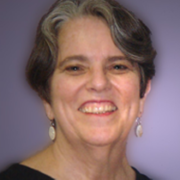
Posterior tongue tie: confusion, confounders, concerns and controversy – HELP!
Christina Smillie, MD, FAAP, IBCLC, FABM - Read morePosterior tongue tie: confusion, confounders, concerns and controversy – HELP!
Catherine Watson Genna, BS, IBCLC
Catherine Watson Genna is an International Board Certified Lactation Consultant in private practice in New York City. Certified in 1992, Catherine is particularly interested in helping moms and babies breastfeed when they have medical challenges. She speaks to healthcare professionals around the world on assisting breastfeeding babies with anatomical, genetic or neurological problems. Her presentations and her writing are enriched by her clinical photographs and videos. Catherine’s team is analyzing data from their research utilizing ultrasound to examine tongue movements of babies with posterior tongue-tie before and after frenotomy (office treatment). Her current project looks at coordination of swallowing and breathing in babies with tongue-tie. She is the author of Selecting and Using Breastfeeding Tools: Improving Care and Outcomes (Hale 2009) and Supporting Sucking Skills in Breastfeeding Infants (Jones and Bartlett Publishers 2008, 2013) as well as professional journal articles. In addition to serving as Associate Editor of the United States Lactation Consultant Association’s official journal Clinical Lactation, Catherine is still an active La Leche League Leader and runs a bi-monthly toddler meeting in Queens.
Christina Smillie, MD, FAAP, IBCLC, FABM
Dr Christina Smillie is an American physician, board certified both as a pediatrician since 1983 and as a lactation consultant since 1995. In 1996 she founded Breastfeeding Resources in Stratford, Connecticut, the first private medical practice in the USA limited to the specialty of breastfeeding medicine.
Her clinical experience with mothers and babies over the past fifteen years has taught her much about a variety of clinical issues. Fascinated by how babies, mothers, and health care professionals learn, she is perhaps best known for her DVD, Baby-led Breastfeeding: The Mother-Baby Dance, which she wrote and produced with Makelin Media and Geddes Productions.
Dr Smillie has been a member of the Academy of Breastfeeding Medicine since its inception, and was awarded Fellowship in 2002. She served two terms on the Academy’s Board of Directors, and currently serves on ABM’s Communications Committee. She continues to serve as an advisor to the American Academy of Pediatrics Section on Breastfeeding, and to the Health Advisory Council of La Leche League International.
Dr Smillie speaks nationally and internationally about the physiology, pathophysiology and clinical management of a wide variety of breastfeeding issues, always stressing the role of the motherbaby as a single psychoneurobiological system, and emphasizing the importance of the innate instincts underlying both maternal and infant competence.
Posterior tongue tie: confusion, confounders, concerns and controversy – HELP!
A growing literature and widespread clinical experience support the role of simple frenotomy in improving breastfeeding function for infants with restrictive anterior frenula. However the diagnosis and management of restrictive tongue function involving the posterior tongue remains confusing and controversial. Since Betty Coryllos’ seminal work ten years ago, subsequent literature has been limited. Definitions, diagnosis, indications for intervention, management choices and anatomic factors predictive of positive outcomes elude us. Over- and under-diagnosis can both lead to adverse outcomes. What has been your experience with this diagnosis? What data do we need to resolve these dilemmas? We’ll look at these concerns through the lens of the available literature, as well as the clinical experience of the presenters and colleagues around the world.

Frenotomy – a review of clients from 2013
Dale Hansson, RN, IBCLC - Read moreFrenotomy – a review of clients from 2013
Dale Hansson, RN, IBCLC
Dale and her husband are parents to 5 beautiful boys. She has been a registered nurse for 33 years and an IBCLC for 12 years. Her interest in tongue-tie began in 2002 with her first private lactation client. This mother struggled to maintain breastfeeding in the 3 months it took to find help. Her journey was painful, frustrating and preventable.
In 2008 Dale’s husband (Dr Tony Nigro) was trained to perform frenotomy by Dr David Todd and Dale began treating tongue-tie with her husband as a team at their practice in southern Sydney. Consultation, assessment and consent with Dale; procedure with Tony, then post-frenotomy feed assistance with Dale. Their age range for treating babies is 1 day to 13 months.
In 2009 Dale took part in the first meeting of the International Affiliation of Tongue-Tie Professionals and continues to value the wisdom and experience of those professionals.
Frenotomy – a review of clients from 2013
Our clinic is a referral point for the treatment of tongue and lip-tie. We accept babies from 1 day to 13 months. We have been treating tongue and lip tie since 2008. Over the last 18 months we have consolidated our experience and collected data to add to the collective evidence about the role of frenotomy in improving breastfeeding outcomes. The reality of frenotomy for families is often frightening and confusing. Managing the conflicting information and the reality of exposing a baby to a controversial procedure needs careful consideration. Our data confirms that frenotomy is a safe and effective procedure but we need to be respectful and open to scrutiny as we advocate for early and effective intervention.
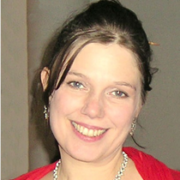
Effects of scheduled vs on-demand feeding on mothers’ wellbeing and children’s cognitive development
Maria Iacovou, PhD - Read moreEffects of scheduled vs on-demand feeding on mothers’ wellbeing and children’s cognitive development
Maria Iacovou, PhD
Dr Maria Iacovou works in the Department of Sociology in the University of Cambridge. Her first degree was in mathematics; she spent several years working as an international tax analyst and a secondary school maths teacher, before studying for a PhD in Economics. Between 1997 and 2013, she worked at the Institute for Social and Economic Research (ISER), an interdisciplinary research institute based at the University of Essex, where she collaborated with colleagues in fields including epidemiology, economics, statistics, demography, social policy and sociology. Maria’s publications reflect this interdisciplinary approach.
Her research interests centre on family relationships. She is interested in people’s living arrangements, the reasons why people choose different living arrangements, and how and why household structures differ across countries. She is interested in the quality of relationships between family members, and particularly in the effects of these relationships on children’s development. Maria is also interested in parenting and child development, particularly in the effects of infant feeding patterns; she has studied the effects of breastfeeding on babies and their mothers, and has undertaken groundbreaking research on the effects of infant feeding schedules on children’s later cognitive development
Effects of scheduled vs on-demand feeding on mothers’ wellbeing and children’s cognitive development
The issue of whether to feed babies on demand or to a schedule is an issue of intense debate among parents; some popular parenting books recommend feeding on demand in a context of close attachment, while other books recommend introducing strict schedules from shortly after birth. However, apart from research which shows that demand-feeding in the early days of babies’ lives helps with establishing breastfeeding, there is little large-scale research into the longer-term effects of scheduled versus demand feeding.
This research uses data from ALSPAC (the Avon Longitudinal Study of Parents and Children) to investigate the relationship between how children were fed as infants, on the one hand, and maternal and child outcomes on the other. Mothers who fed to a schedule reported getting more sleep, and scored more highly on scales of maternal wellbeing than mothers who fed on demand (although there was no difference in the incidence of postnatal depression between the two groups). By contrast, children who had been fed on demand went on to do better in school-based attainment tests, and in IQ tests, at all ages between 5 and 14. This effect is partly explained by longer durations of breastfeeding for demand-fed children, but a significant effect of demand-feeding is observed over and above the effect due to breastfeeding duration.
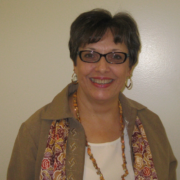
Human milk and breastfeeding in the NICU: real life challenges and rewards
Phyllis Kombol, RNC, MSN, IBCLC - Read moreHuman milk and breastfeeding in the NICU: real life challenges and rewards
Phyllis Kombol, RNC, MSN, IBCLC
Phyllis Kombol is a Registered Nurse certified in NICU nursing. She has been an RN since 1979, a Parent-Child Clinical Nurse Specialist since 1987, and an IBCLC since 1993. In her current lactation consultant position, she is primarily responsible for the NICU, and also provides outpatient lactation care. She has been instrumental in developing a formalized Lactation Clinical Internship program at her workplace and is co-author of ILCA’s 2012 book Clinical Instruction in Lactation: Teaching the Next Generation. She leads the Clinical Instruction team of ILCA’s Education Committee and is part of the 2014 ILCA Diversity Summit Design Team. She teaches webinars & conferences several times each year, is a member of several nursing and lactation professional organizations, as well as Toastmasters International.
Human milk and breastfeeding in the NICU: real life challenges and rewards
We know about the science of human milk, its potential for protecting NICU babies from complications and promoting brain, immune, and gut development. We apply scientific principles for establishing milk production as well as storing, handling, and using mothers’ own and donor human milk. There are still many challenges to address when feeding human milk in the NICU, but that’s just the start. This presentation will revisit potential ways to address challenges and explore strategies that care providers can implement at the bedside to optimize the feeding of human milk, to help families reach their breastfeeding goals, and to normalize breastfeeding for babies who begin their life in the NICU.
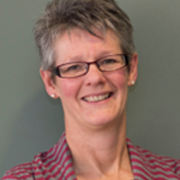
Diabetes and Antenatal Milk Expressing (DAME): a randomised controlled trial
Anita Moorhead, RN, RM, Neonatal Cert Grad Cert, HServ Man, IBCLC - Read moreDiabetes and Antenatal Milk Expressing (DAME): a randomised controlled trial
Anita Moorhead, RN, RM, Neonatal Cert Grad Cert, HServ Man, IBCLC
Anita Moorhead has worked in the fields of midwifery, neonatal paediatrics, early parenting, lactation services and nursing management and became interested in the field of lactation while working in neonatal intensive care. She has collaborated on a number of breastfeeding papers, hospital and state based clinical guidelines and breastfeeding reports. She has been a BFHI assessor and educator.
Her current position is the Clinical Midwife Consultant (Lactation), Royal Women’s Hospital, Melbourne and Trial Coordinator for the DAME (Diabetes and Antenatal Expressing Trial), Judith Lumley Centre (formally Mother & Child Health Research), La Trobe University.
Diabetes and Antenatal Milk Expressing (DAME): a randomised controlled trial
Diabetes is increasing globally and occurs in 8% of pregnancies. These pregnancies are considered to be at high risk of perinatal complications. Many maternity providers encourage these women to express colostrum before birth to have breast milk available should the infant need supplementary feeding to treat hypoglycaemia. Evidence for this practice is lacking. This session will look at the DAME Trial in the participating Melbourne Hospitals.
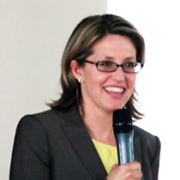
Returning to exclusive breastfeeding: effects of the practice of early formula supplementation in healthy neonates
Elizabeth Myler, BS, BSN, RN, IBCLC - Read moreReturning to exclusive breastfeeding: effects of the practice of early formula supplementation in healthy neonates
Elizabeth Myler, BS, BSN, RN, IBCLC
Elizabeth (Beth) Myler is the co-owner/co-founder of Mahala Lactation and Perinatal Services LLC, a busy private practice serving Northwestern and Central New Jersey and Lehigh Valley, PA, USA. Beth works with medically diverse mother/infant dyads, trains and mentors lactation consultant interns and co-manages Mahala associates and daily logistical operations. Beth became a Registered Nurse in 1999 and an International Board Certified Lactation Consultant in 2009. Beth was selected for a two year volunteer service in the US Peace Corp as a Maternal/Child Health and Nutrition Extension Agent in French-speaking Cameroon, West Africa. She frequently shares clinical stories and life lessons based on her unique work in 3rd world sub-Saharan Africa during her presentations. She began her clinical nursing career in pediatric and adolescent medicine at the Children’s Hospital of Philadelphia (CHOP) and now has over 14 years of experience in the areas of reproductive biology, community and mental health, school nursing and maternal/child health. She is the proud mother of three breastfed sons and lives with her family in Hackettstown, New Jersey, USA.
Returning to exclusive breastfeeding: effects of the practice of early formula supplementation in healthy neonates
Early formula feeding is often recommended without evidenced-based clinical indications. This presentation reviews current Academy of Breastfeeding Medicine (ABM) protocols for supplementation of the healthy term neonate. Research on the risk of formula supplementation for infant and maternal health outcomes and global breastfeeding rates will be reviewed.
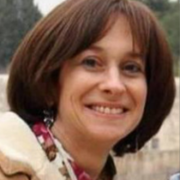
Incorporating cultural competence into lactation counseling: what do we need to know?
Anita Noble, DNSc, CNM, CTN-A, IBCLC - Read moreIncorporating cultural competence into lactation counseling: what do we need to know?
Anita Noble, DNSc, CNM, CTN-A, IBCLC
Dr Anita Noble is a senior faculty member of the Henrietta Szold/Hadassah-Hebrew University School of Nursing, Faculty of Medicine located in Jerusalem, Israel and an Adjunct Assistant Professor of Nursing at the University of Pennsylvania School of Nursing. She is a certified nurse-midwife and a certified lactation consultant. She was the first nurse in Israel to become inducted as a Transcultural Scholar and was certified as a transcultural nurse by the Transcultural Nursing Society. Dr Noble founded the first interfaith group for healthcare professionals in Israel. She introduced and coordinated the cultural competence educational content for the nursing and medical schools at Hebrew University. Her areas of research are Cultural Competence, Lactation and Women’s Health. Dr Noble is currently the Cultural Competence Expert for the Israel Ministry of Health’s initiative to decrease disparities in healthcare. Presently, her faculty practice is in lactation consulting where she cares for mothers and babies with complex issues related to breastfeeding.
Incorporating cultural competence into lactation counseling: what do we need to know?
Lactation consultants strive to provide high quality care that promotes lactation support for the mother, baby and family. As with most healthcare practices, breastfeeding is highly influenced by cultural beliefs, values and practice. Cultural competence has long been recognized as an integral component in healthcare delivery as it provides care that is culturally and linguistically appropriate. Using cultural competence models, this lecture will include case presentations, research, cultural competence issues in different parts of the world and a practical approach for lactation consultants to incorporate cultural competence into practice.

Feeding babies with Down Syndrome: the importance of breast milk, breastfeeding and child-directed feeding approaches
Jill Rabin, MS, CCC-SLP/L, IBCLC - Read moreFeeding babies with Down Syndrome: the importance of breast milk, breastfeeding and child-directed feeding approaches
Jill Rabin, MS, CCC-SLP/L, IBCLC
Jill Rabin is a pediatric speech pathologist and international board certified lactation consultant, who received her bachelor’s and master’s degree in communication disorders from Boston University. She became a lactation consultant in 1999 and has been working primarily with the 0-3 population for over 27 years, combining both of her professions to assist with complicated and high-risk feeding cases. She was hospital based for 14 years, where she worked in two inner city hospitals as both a speech pathologist and lactation consultant. At one of the hospitals, she developed a feeding program to facilitate smooth transition to oral feedings for all babies in the special care nursery and participated as part of a weekly diagnostic team that provided developmental follow-up to preemies and high-risk infants. She also participated on a developmental team for the Infant Mortality Reduction Initiative that provided screenings to young babies in areas with the highest infant mortality rates.
She published a chapter in a book entitled Substance Abuse Risk Factors and Childhood Language Disorders and she also wrote an article regarding risk factors in speech development for Chicago Parent.
Currently, she has a private practice in the Chicagoland area where she primarily sees at-risk and special needs breastfeeding patients, children with Down syndrome and children with feeding aversion from birth to 3 years of age. She often begins working with her Down syndrome patients as breastfeeding newborns, and is even fortunate enough to begin counseling mothers who have received a prenatal diagnosis of Down syndrome, regarding feeding options and preparation, before the birth of their baby. In addition to doing diagnostic and therapeutic work with young babies she also teaches classes on development and transitioning babies to solid foods for new moms, and holds an educational group called the North Shore Down Syndrome Awareness group where families and their children meet for social and educational purposes. It is her dream to build a collaborative relationship between speech pathologists and lactation consultants in hopes of increasing the possibility of successful breastfeeding, especially with at-risk infants.
Feeding babies with Down Syndrome: the importance of breast milk, breastfeeding and child-directed feeding approaches
Participants will understand medical issues associated with Down syndrome and how they impact the feeding process, and most specifically, the establishment of exclusive breastfeeding. They will learn how to counsel families on protecting their milk supply, and how to facilitate breastfeeding and provision of breast milk to this at risk population. They will identify feeding behaviors and issues such as muscle tone that impact the establishment of exclusive breastfeeding and will learn methods/techniques on how to facilitate milk transfer at the breast. They will also understand the importance of food choices, feeding practices and the impact that breastfeeding and provision of breast milk has on babies with Down syndrome, in regards to health, medical and overall developmental outcomes.
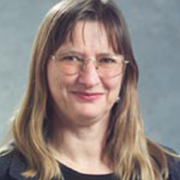
The need to invest in babies and the economic cost of premature weaning from breastfeeding
Julie Smith, PhD, BEc, BA - Read moreThe need to invest in babies and the economic cost of premature weaning from breastfeeding
Julie Smith, PhD, BEc, BA
Dr Julie Smith is a Visiting Fellow at the Australian Centre for Economic Research on Health, Australian National University (ANU), with internationally recognized expertise on the economics of breastfeeding. Dr Smith was an invited expert for the US Surgeon General’s 2011 Call to Action on Breastfeeding, the Australian Parliament’s Best Start report on Breastfeeding, and technical advisor to the WHO/UNICEF Western Pacific 2007 Regional Consultation on Breastfeeding. In 2014, she was economics advisor on the International Baby Food Action Network (IBFAN) official delegation to the 67th World Health Assembly. Dr Smith has recently led a research partnership with the Australian Breastfeeding Association (ABA) on best practice support for breastfeeding in workplaces and childcare. Other research, also funded by an Australian Research Council grant on ‘the economics of breastfeeding and the market for mothers milk’ has included an innovative nationwide time use study of new mothers, and a study of infant food marketing. Dr Smith has served on the International Lactation Consultants’ Association Research Committee since 2012. From 2002 to 2010, she was a director on the Board of ABA, including Honorary Treasurer (2003-2007).
The need to invest in babies and the economic cost of premature weaning from breastfeeding
More than 800,000 under-five deaths could be prevented globally by achieving optimal breastfeeding practices. On the other hand, US$58 billion was spent on commercial baby food including infant formula in 2013. In spite of scientific evidence substantiating the importance of breastfeeding in child survival and development, as well as its economic benefits, there are substantial gaps in many countries in implementation of the Global Strategy for Infant and Young Child Feeding particularly on optimal breastfeeding. Support for improved breastfeeding is inadequately prioritized by current policy and practice at both global and country levels. Lack of financial resources for key programs is a major impediment, making economic perspectives important to their practical implementation. The World Breastfeeding Costing Initiative (WBCi) launched in 2013, attempts to determine the financial investment necessary to implement the Global Strategy in its entirety, and to introduce a tool to estimate the costs for individual countries. WBCi consists of an advocacy document, The Need to Invest in Babies, and a financial planning tool.
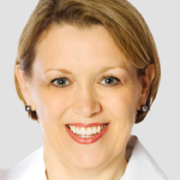
Impact of stopping free infant formula in public hospitals on baby-friendly hospital practices and breastfeeding outcomes
Marie Tarrant, PhD, MPH, RN - Read moreImpact of stopping free infant formula in public hospitals on baby-friendly hospital practices and breastfeeding outcomes
Marie Tarrant, PhD, MPH, RN
Dr Marie Tarrant is currently an Associate Professor in the School of Nursing at The University of Hong Kong. Prior to moving to Hong Kong she worked as a public health nurse and nurse practitioner in Canada. Her major research interests are breastfeeding and maternal and child health. Her research has focused on the culture of breastfeeding in Hong Kong, the impact of hospital practices on breastfeeding outcomes, factors which promote exclusive breastfeeding, and the impact of infant feeding methods on various health outcomes.
Impact of stopping free infant formula in public hospitals on baby-friendly hospital practices and breastfeeding outcomes
In April 2010, all public obstetric hospitals in Hong Kong stopped accepting free infant formula from manufacturers and began paying market price for infant formula products. We conducted a study to assess the impact of adopting a policy of paying market price for infant formula in public hospitals on in-hospital infant formula supplementation rates, baby-friendly hospital practices and breastfeeding duration and exclusivity. Two prospective cohorts of healthy, full-term mother-infant pairs were recruited from the post-natal obstetric units of four public hospitals in Hong Kong. The first cohort was recruited prior to the policy implementation and the second cohort was recruited after the policy implementation. Study results show that stopping the acceptance of free infant formula in hospitals improves in-hospital exclusive breastfeeding rates, reduces in-hospital formula supplementation, increases compliance with baby-friendly practices such as the early initiation of breastfeeding and prolongs the duration of breastfeeding.
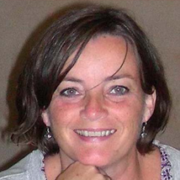
The Dutch Human Milk Bank: a glimpse behind the scenes
Ineke van Vliet, RN - Read moreThe Dutch Human Milk Bank: a glimpse behind the scenes
Ineke van Vliet, RN
Ineke worked for 24 years in the Erasmus MC-Sophia Children’s Hospital in Rotterdam. Since early 2011 she has been working in the VU University Medical Centre in Amsterdam. She started her career as an intensive care specialist nurse for children. Since 1997 she has become more and more involved in scientific research. She studied “Clinical Research Coordination” in 2002 and since then she has been working as a Clinical Research Coordinator.
In February 2010 she became the coordinator of the Dutch Human Milk Bank. She was involved from the very start to facilitate the establishment of the milk bank in the Netherlands.
With the first approval of a breastmilk donor in May 2011, she became responsible for the coordination of the Dutch Human Milk Bank and the scientific research that is done with the donor milk.
The Dutch Human Milk Bank: a glimpse behind the scenes
The Dutch Human Milk Bank was founded in the VU University Medical Centre in Amsterdam with the
goal of providing donor human milk to all babies whose own mothers are unable to provide their own, or enough of their own, breastmilk.
During this presentation the procedures of the Dutch Human Milk Bank will be described, including how we reach our potential donors, how we screen them and how we collect, treat and preserve the donor milk. Until now, donor milk is initially only given to premature babies if they are part of our scientific research study, the Early Nutrition Study. We are investigating if donor milk used as a supplement to the mothers’ own breastmilk has more benefits than formula for premature babies. During the presentation I will give a brief overview of this study.
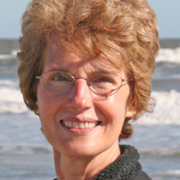
Cracking the code: demystifying the International Code of Marketing of Breastmilk Substitutes
Marsha Walker, RN, IBCLC - Read moreCracking the code: demystifying the International Code of Marketing of Breastmilk Substitutes
Marsha Walker, RN, IBCLC
Marsha Walker is a registered nurse and international board certified lactation consultant. She has been assisting breastfeeding families in hospital, clinic, and home settings since 1976. Marsha is the executive director of the National Alliance for Breastfeeding Advocacy: Research, Education, and Legal Branch (NABA REAL). As such, she advocates for breastfeeding at the state and federal levels. She served as a vice president of the International Lactation Consultant Association (ILCA) from 1990-1994 and in 1999 as president of ILCA. She is a board member of the Massachusetts Breastfeeding Coalition, the US Lactation Consultant Association, and Baby Friendly USA, USLCA’s representative to the USDA’s Breastfeeding Promotion Consortium, and NABA REAL’s representative to the US Breastfeeding Committee. Marsha is an international speaker, and an author of numerous publications including ones on the hazards of infant formula use, Code issues in the US, and Breastfeeding Management for the Clinician: Using the Evidence.
Cracking the code: demystifying the International Code of Marketing of Breastmilk Substitutes
The International Code of Marketing of Breastmilk Substitutes (The Code) has gained increased visibility relative to the ethical practice of health care providers and the health care system. More hospitals are engaged in the Baby Friendly process whose foundation rests on the Code. Continuing education offerings from breastfeeding coalitions and organizations are trying to adhere to the principles of the Code, as are individual lactation consultants and other health care professionals. Manufacturers and distributors of products covered under the Code are constantly changing their marketing of products, making it difficult to know who is Code compliant and who isn’t. How can we keep up with all of this? And by the way, what does the Code really say about some of the scenarios we are faced with today? How do we adhere to both the letter and the principles of the Code? Who can help with the sticky questions? This presentation will take a look at the Code, validate its continued importance (no, it’s not out of date!), and help make it relevant to current clinical practice.

Delayed lactogenesis: the waiting game
Marsha Walker, RN, IBCLC - Read moreDelayed lactogenesis: the waiting game
Marsha Walker, RN, IBCLC
Marsha Walker is a registered nurse and international board certified lactation consultant. She has been assisting breastfeeding families in hospital, clinic, and home settings since 1976. Marsha is the executive director of the National Alliance for Breastfeeding Advocacy: Research, Education, and Legal Branch (NABA REAL). As such, she advocates for breastfeeding at the state and federal levels. She served as a vice president of the International Lactation Consultant Association (ILCA) from 1990-1994 and in 1999 as president of ILCA. She is a board member of the Massachusetts Breastfeeding Coalition, the US Lactation Consultant Association, and Baby Friendly USA, USLCA’s representative to the USDA’s Breastfeeding Promotion Consortium, and NABA REAL’s representative to the US Breastfeeding Committee. Marsha is an international speaker, and an author of numerous publications including ones on the hazards of infant formula use, Code issues in the US, and Breastfeeding Management for the Clinician: Using the Evidence.
Delayed lactogenesis: the waiting game
Delay in the onset of copious milk production has a number of origins. It often results in formula supplementation, weight loss, hyperbilirubinemia, and premature weaning. This presentation explores origins of delayed lactogenesis such as maternal obesity and maternal diabetes and offers interventions to adequately nourish the infant and preserve lactation during a rocky start to breastfeeding.

Using social media to promote and support breastfeeding
Todd Wolynn, MD, MMM, IBCLC - Read moreUsing social media to promote and support breastfeeding
Todd Wolynn, MD, MMM, IBCLC
Dr Todd Wolynn has been a General Pediatrician and IBCLC since 1995. He returned to Carnegie Mellon University from 2006-8 to obtain his Master of Medical Management degree. Dr Wolynn serves in the AAP Section on Breastfeeding Executive Committee as a Liaison and serves in an advisory capacity at the United States Breastfeeding Committee. He has written and presented nationally on the business of breastfeeding and the need for more breastfeeding promotion and support. Dr Wolynn is recognized nationally for teaching physicians ‘how to’ powerfully and effectively support breastfeeding in hospitals and offices. He is a fervent supporter of the use of Social Media to positively benefit Breastfeeding. He is very proud of his effort to create the Breastfeeding Center of Pittsburgh (in 2006) and the National Breastfeeding Center (in 2011).
Using social media to promote and support breastfeeding
‘Breast is Best’ … right??? So why is social media so important to promote it? If you are asking this question than this is definitely the right talk for you. You’ll learn about the history behind infant feeding messaging and about Generation Y – if they can help overthrow a country with social media, imagine what they could do for breastfeeding!

